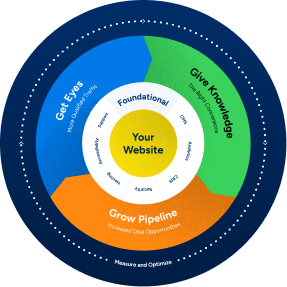Content Marketing and Inbound Marketing are similar in nature where they both rely heavily on content. Where they differ is that essentially, content marketing is just one piece of inbound marketing. Content marketing alone cannot take full advantage of what a total inbound marketing approach has to offer where there is technology, SEO, marketing automation and more that go into a successful inbound marketing strategy.
Focusing on Content Marketing
Content marketing alone focuses on creating and promoting relevant and consistent content to your ideal target audiences. The end goal or result you want to see from content marketing focuses solely on driving profitable customer action. Before you get into creating content, it is vital you know everything there is to know about your target crowd. That way you can get inside their head when you start to write out some pieces of content. This also helps you to establish and build a foundation around a relationship with your audience. In turn, this leads to trust. Isn’t it crazy how all this can happen just around a few pieces of content?
When you start to build trust with your target audience, the more likely they are to lead to a conversion, a lead, or any type of profitable outcome for you and your brand. Like we mentioned earlier, this is what you want to see from content marketing alone. While other types of marketing focus on other main goals, our main goal with content is to see middle to lower funnel leads.
Focusing on Inbound Marketing
Think of inbound marketing as a tool box. Within this inbound marketing tool box, you get many sets of tools you can work with. These tools within the inbound marketing tool box are meant to help you build a successful, profitable campaign. Some tools we might use for our inbound marketing strategy include SEO, social posts, automation, nurturing, marketing emails, and content marketing! When you get to use all these types of marketing tools together, you get an inbound marketing strategy. When you put all these different types of marketing efforts together, it helps build something stronger, which is why inbound marketing is considered a stronger type of marketing.
Although you can use those types of smaller marketing efforts separately, they all work really well when they rely on one another in an inbound marketing campaign. The end goal of your inbound marketing campaign is to have a uniform look throughout all your different working pieces that can engage a prospect from the beginning and lead them into a customer for life.
All the different stages of an inbound marketing campaign are meant to start at the top of the funnel and work its way down to a bottom of the funnel customer. For example, let’s say one tool you’re using is creating social posts that promote your new blog post. Great! That’s the first step you want to take. Secondly, when they reach your blog post on your website, they now have the option to learn more or click on perhaps a CTA (or call to action) you have in place for them. This can lead them further down the funnel. Lastly, your other tools, such as email marketing and nurturing can help give them that last push to turn into an SQL (sales qualified lead).
First Off, Why Does It Matters?
You might be wondering why the difference between content marketing and inbound marketing even matters. Although content marketing is just a sliver of inbound marketing as a whole, it makes a big difference in your strategy. Inbound strategies depend on content. They basically eat, sleep, and breathe content. Without some hefty, quality content, an inbound marketing strategy is going to fail. Meaningful content alone will grab the attention of who you are trying to target. When you add that into your inbound marketing mix, you can capture the attention of even more qualified people on all types of platforms. Inbound marketing doesn’t just include content marketing, but other types of marketing as well that all help along the way. Social media, marketing automation, SEO content, lead nurturing and email marketing, and a few others all fit under the inbound marketing umbrella. When you put all these working pieces together, you can create a beautiful strategy.
Overview
Overall, it’s important to think of the bigger picture in this case. Yes, content marketing works great alone in some cases, but if you really want to take your marketing efforts to the next level, try an inbound marketing strategy. Here, at GoingClear, we excel in creating inbound marketing strategies to bring in as many MQLs and SQLs as possible. We strive to create the most powerful and relevant content and distribute that throughout an entire inbound marketing strategy.

